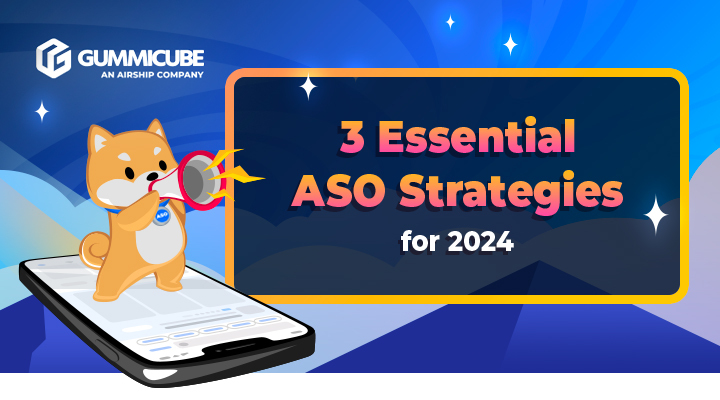With every new year comes ways to enhance your App Store Optimization to stay relevant in the eyes of users. For 2024, this means using all the app marketing tools available to maximize reach and engagement. In this article, we’ll touch upon three must-haves for your own ASO marketing strategy so that you can help your app reach its full potential.
Deep Linking
Attempts to reach new app users are no longer confined to the boundaries of the App Store. In an effort to improve discoverability, Apple introduced updates with iOS 17 that shine a light on potentially relevant apps for users performing a search query using Siri and Spotlight. So how can developers leverage the new improvements to aid their mobile marketing initiatives?
Deep linking enables app discovery outside of the Apple App Store and Google Play. On both platforms, algorithms index the content found within your app to showcase relevant features to users not searching specifically within the App Store or Google Play Store. Apple Universal Links on Apple and Android App Links are the two enablers you can use to your advantage to increase visibility outside of the conventional mobile app store search.
To harness the power of deep linking, you must ensure your app metadata (not to be confused with app store metadata) contains terms users would associate with your app when searching. Similar to app store keyword optimization, the same terms you would incorporate into your app store keyword strategy should be included in your app metadata to help with indexation outside of the app stores.
For example, if you have a travel app, users searching for “cheap flights” would see your app appear in Spotlight for iPhone, and in their Google search results for Android if your app metadata includes those terms.
Mobile App A/B Testing
Resonating with your audience’s needs can appear as if you’re performing digital witchcraft. Yet a thorough understanding of one’s user base isn’t the result of any magic trick, but consistent trial and error. Mobile app A/B testing lays the groundwork for gradually aligning your ASO strategy with user needs by adjusting app store metadata and creative assets, allowing you to identify what combination of elements connects with them and their interests more.
Native tools like Apple’s Product Page Optimization and Google’s Store Listing Experiments serve as two vehicles for getting closer to what your target audience is looking for. Each one lets developers create variants of their app store listing to see which resonates with potential users more. Apple’s PPO allows app developers to modify their app listing creatives, such as the icon, screenshots, and preview video. Google’s Experiments also facilitate creative testing while allowing you to try out different app description variants as well.
While the above platforms are a great starting point to dip your feet into mobile A/B testing, you can also leverage powerful ASO tools that house even more capabilities. ASO solutions like Splitcube are capable of creating customizable experiences not available with Apple or Google.
After running your app A/B tests, you can use their results to guide any adjustments to your primary app store listing. This approach ensures the edits you make are backed by data that accurately represents how your target audience is most likely to respond.
In-App Events & Promotional Content
Your app store listing does a great job of showcasing your app’s core features, with occasional seasonal content and feature updates being highlighted here and there. However, if you want to maximize your ASO marketing efforts, you’ll want to make use of all the resources at your disposal.
Both Apple and Google provide tools that help increase conversions and foster engagement. The two platforms help developers showcase relevant events, major updates, and special offers through In-App Events and Promotional Content.
Apple’s In-App Events and Google’s Promotional Content help you target potential, existing, and even lapsed users while acting as a channel for highlighting relevant content without having to perform a full app store metadata update. Appearing throughout the App Store and Google Play, both tools allow you to seamlessly promote features and information to stimulate engagement on your app. This can help boost activity during specific holidays, for the launch of a new gameplay feature, and much more.
For example, if Valentine’s Day is coming around, you may want to highlight discounts for certain gifts available through your app. A relevant In-App Event or Promotional Content card brings more visibility to that specific offer and helps attract users who might be interested.
App Store Marketing for 2024
App Store Optimization and its core components remain unchanged, with foundational elements such as metadata optimization, conversion optimization, and paid search being fundamental to app success. However, each year brings new challenges and opportunities for you to capitalize on and take your app to new heights.
Whether it’s leveraging deep links for increased discoverability, consistently performing mobile A/B tests to stay competitive, or harnessing the power of In-App Events and Promotional Content to increase reach and engagement, start your 2024 off the right way by ensuring your ASO plan contains these essential strategies.
Start your ASO journey off the right way with the mobile marketing experts at Gummicube today!







Comments
Loading…